 Search by Keyword
Sign Up Below for our MONTHLY BEATLES TRIVIA QUIZ!
|
“SHE’S LEAVING HOME”
(John Lennon – Paul McCartney)
 “George Martin had the idea to put the string quartet on the song and I said, ‘No, I don’t think so.’ He said, ‘I’ve really got a feeling for it and I can hear it working.’ So I said, ‘Oh, a string quartet, it’s very classical, I’m not interested really…’” “George Martin had the idea to put the string quartet on the song and I said, ‘No, I don’t think so.’ He said, ‘I’ve really got a feeling for it and I can hear it working.’ So I said, ‘Oh, a string quartet, it’s very classical, I’m not interested really…’”
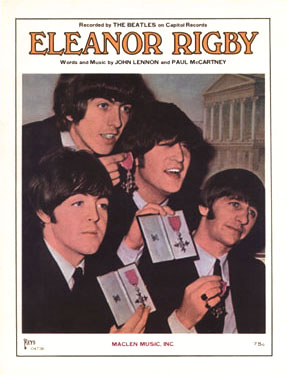 This first-hand account from McCartney concerned his reluctance to add the string arrangement to his classic 1965 hit “Yesterday,” his attitude certainly changing after he heard the finished product. The overwhelming response to this song undoubtedly was the impetus to the use of stringed instruments on the remainder of the albums released by The Beatles. The group had taken this instrumentation to an elevated level in 1966 with “Eleanor Rigby,” this song gaining a Grammy award in the process. And then, with their intense focus on the recording process the following year, they took yet a different course with this instrumentation on the beautifully poignant “She’s Leaving Home.” This first-hand account from McCartney concerned his reluctance to add the string arrangement to his classic 1965 hit “Yesterday,” his attitude certainly changing after he heard the finished product. The overwhelming response to this song undoubtedly was the impetus to the use of stringed instruments on the remainder of the albums released by The Beatles. The group had taken this instrumentation to an elevated level in 1966 with “Eleanor Rigby,” this song gaining a Grammy award in the process. And then, with their intense focus on the recording process the following year, they took yet a different course with this instrumentation on the beautifully poignant “She’s Leaving Home.”
This snapshot of the '60s generation gap and its sad outcome within the family leaves hardly a dry eye when the lyrics are contemplated. As decades have gone by, the message most assuredly stands the test of time.
 February 27, 1967 issue of London's Daily Mail
|
Songwriting History
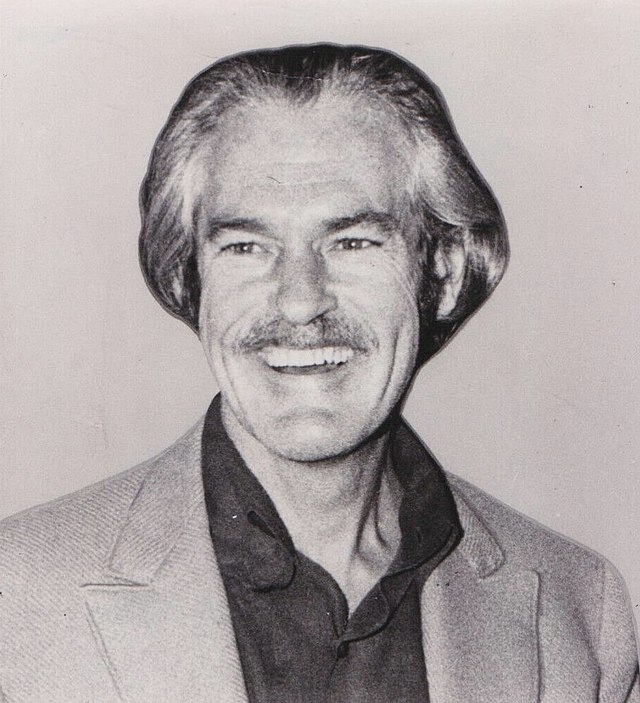 “Turn on, tune in, drop out.” This phrase, first popularized by counter-culturist Timothy Leary in late 1966, advocated embracing cultural changes and detaching yourself from existing forms of conventionality. Timothy Leary explained in his 1983 autobiography “Flashbacks” that the term “drop out” meant “self-reliance, a discovery of one's singularity, a commitment to mobility, choice, and change.” “Turn on, tune in, drop out.” This phrase, first popularized by counter-culturist Timothy Leary in late 1966, advocated embracing cultural changes and detaching yourself from existing forms of conventionality. Timothy Leary explained in his 1983 autobiography “Flashbacks” that the term “drop out” meant “self-reliance, a discovery of one's singularity, a commitment to mobility, choice, and change.”
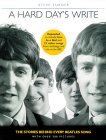 The result of this highly publicized suggestion was, as Steve Turner’s book “A Hard Day’s Write” indicates, “streams of young people headed for San Francisco, center of Flower Power, leading the FBI to announce a record number of 90,000 runaways” in 1967. The youth of that period would often quit school or anything else that made them conform to "straight" society, virtually vanishing from their previous lifestyle to one of supposed "freedom." The result of this highly publicized suggestion was, as Steve Turner’s book “A Hard Day’s Write” indicates, “streams of young people headed for San Francisco, center of Flower Power, leading the FBI to announce a record number of 90,000 runaways” in 1967. The youth of that period would often quit school or anything else that made them conform to "straight" society, virtually vanishing from their previous lifestyle to one of supposed "freedom."
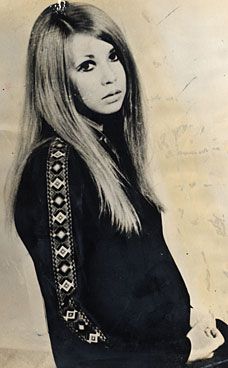 One such teenager was Melanie Coe, the daughter of John and Elsie Coe from Stamford Hill in London. The February 27th, 1967 isuue of London’s Daily Mail featured an article about her disappearance with the heading “A-Level Girl Dumps Car And Vanishes.” This article went on the describe Melanie Coe as being “the schoolgirl who seemed to have everything,” her leaving not only her Austin 1100 outside the house unlocked, but also “a wardrobe full of clothes,” only leaving with “those she was wearing.” Her father was quoted as saying, “I cannot imagine why she should run away. She has everything here…even her fur coat.” One such teenager was Melanie Coe, the daughter of John and Elsie Coe from Stamford Hill in London. The February 27th, 1967 isuue of London’s Daily Mail featured an article about her disappearance with the heading “A-Level Girl Dumps Car And Vanishes.” This article went on the describe Melanie Coe as being “the schoolgirl who seemed to have everything,” her leaving not only her Austin 1100 outside the house unlocked, but also “a wardrobe full of clothes,” only leaving with “those she was wearing.” Her father was quoted as saying, “I cannot imagine why she should run away. She has everything here…even her fur coat.”
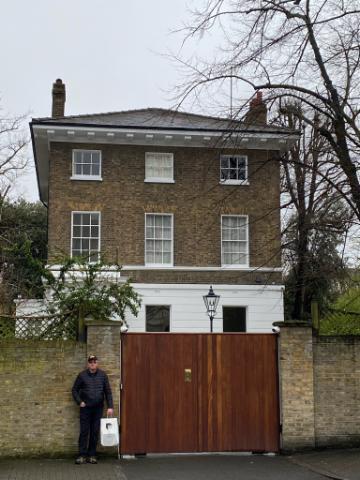 “We’d seen a story in the newspaper about a young girl who had left home and not been found. There were a lot of those at the time,” states McCartney in his book “Many Years From Now.” Continuing his account of the writing of the song, which took place in March of 1967 undoubtedly at Paul’s St. John’s Wood home, he states: “That was enough to give us a story line. So I started to get the lyrics: she slips out and leaves a note and then the parents wake up and then…It was rather poignant. I like it as a song, and when I showed it to John, he added the Greek chorus, long sustained notes, and one of the nice things about the structure of the song is that it stays on those chords endlessly. Before that period in our songwriting we would have changed chords but it stays on the C chord (sic E major). It really holds you. It’s a really nice little trick and I think it worked very well." Elaborating further in his book "The Lyrics," Paul states: "One of my favourite examples of using just one chord is 'She's Leaving Home,' where I fought the chord change. So it goes 'She' - E major, I think it is (in the stereo mix). Stays on E - 'is leaving.' Change? No. 'Home.' Change" No. It stays on that E major for a long time. I felt proud of that, because the natural instict is to change with the opening of every new line." “We’d seen a story in the newspaper about a young girl who had left home and not been found. There were a lot of those at the time,” states McCartney in his book “Many Years From Now.” Continuing his account of the writing of the song, which took place in March of 1967 undoubtedly at Paul’s St. John’s Wood home, he states: “That was enough to give us a story line. So I started to get the lyrics: she slips out and leaves a note and then the parents wake up and then…It was rather poignant. I like it as a song, and when I showed it to John, he added the Greek chorus, long sustained notes, and one of the nice things about the structure of the song is that it stays on those chords endlessly. Before that period in our songwriting we would have changed chords but it stays on the C chord (sic E major). It really holds you. It’s a really nice little trick and I think it worked very well." Elaborating further in his book "The Lyrics," Paul states: "One of my favourite examples of using just one chord is 'She's Leaving Home,' where I fought the chord change. So it goes 'She' - E major, I think it is (in the stereo mix). Stays on E - 'is leaving.' Change? No. 'Home.' Change" No. It stays on that E major for a long time. I felt proud of that, because the natural instict is to change with the opening of every new line."
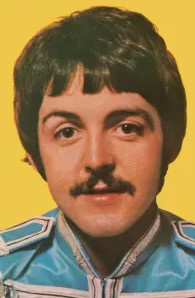 McCartney then defined what the “Greek chorus” entails by adding: “While I was showing that to John, he was doing the Greek chorus, the parents’ view: ‘We gave her most of our lives, we gave her everything money could buy.’ I think that may have been in the runaway story, it might have been a quote from the parents.” John reiterated Paul’s explanation by clarifying: “Paul had the basic theme for this song, but all those lines like ‘We sacrificed most of our life…we gave her everything money could buy,’ those were the things Mimi used to say to me. It was easy to write." The original lyric sheet shows alternate lyrics for the second refrain that were quite possibly written by John as well, these being "Is this the thanks that we get / All of the thanks that we get," these lines being a replacement for "We never thought of ourselves / never a thought for ourselves." McCartney then defined what the “Greek chorus” entails by adding: “While I was showing that to John, he was doing the Greek chorus, the parents’ view: ‘We gave her most of our lives, we gave her everything money could buy.’ I think that may have been in the runaway story, it might have been a quote from the parents.” John reiterated Paul’s explanation by clarifying: “Paul had the basic theme for this song, but all those lines like ‘We sacrificed most of our life…we gave her everything money could buy,’ those were the things Mimi used to say to me. It was easy to write." The original lyric sheet shows alternate lyrics for the second refrain that were quite possibly written by John as well, these being "Is this the thanks that we get / All of the thanks that we get," these lines being a replacement for "We never thought of ourselves / never a thought for ourselves."
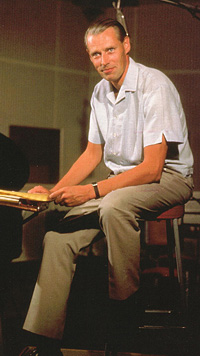 Therefore, it appears that most of the chorus - which includes the "long sustained notes" (“sheeeee….is leaving…..”) and the answering melody lines (“we struggled hard all our lives to get by” etc.) - was written by John while all of the verses were composed by Paul. “It was John’s idea for the words of the old couple, ‘What did we do that was wrong?’ in the background,” remembered George Martin. “He was looking at the misused old people and also the conflict between them and the young girl. Originally, this was undoubtedly Paul’s song, but Lennon contributed quite a bit in a way with the answering chorus.” Paul confirms this by saying, “It was largely mine, with help from John.” Therefore, it appears that most of the chorus - which includes the "long sustained notes" (“sheeeee….is leaving…..”) and the answering melody lines (“we struggled hard all our lives to get by” etc.) - was written by John while all of the verses were composed by Paul. “It was John’s idea for the words of the old couple, ‘What did we do that was wrong?’ in the background,” remembered George Martin. “He was looking at the misused old people and also the conflict between them and the young girl. Originally, this was undoubtedly Paul’s song, but Lennon contributed quite a bit in a way with the answering chorus.” Paul confirms this by saying, “It was largely mine, with help from John.”
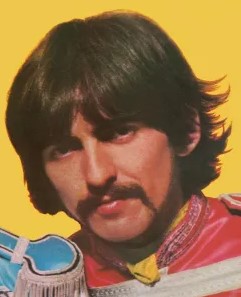 Like many other tracks featured on “Sgt. Pepper,” people have also read things into the lyrics of “She’s Leaving Home,” such as the girl having an abortion. Even George Harrison came forward at the time to dispel this rumor. "'A man from the motor trade' means whatever is in your mind, you know. I know when I say it is not an abortion, and if people believe it is, then it is up to them. They will just go on believing it." However, as we will investigate below, maybe those rumors had some validity afterall. Like many other tracks featured on “Sgt. Pepper,” people have also read things into the lyrics of “She’s Leaving Home,” such as the girl having an abortion. Even George Harrison came forward at the time to dispel this rumor. "'A man from the motor trade' means whatever is in your mind, you know. I know when I say it is not an abortion, and if people believe it is, then it is up to them. They will just go on believing it." However, as we will investigate below, maybe those rumors had some validity afterall.
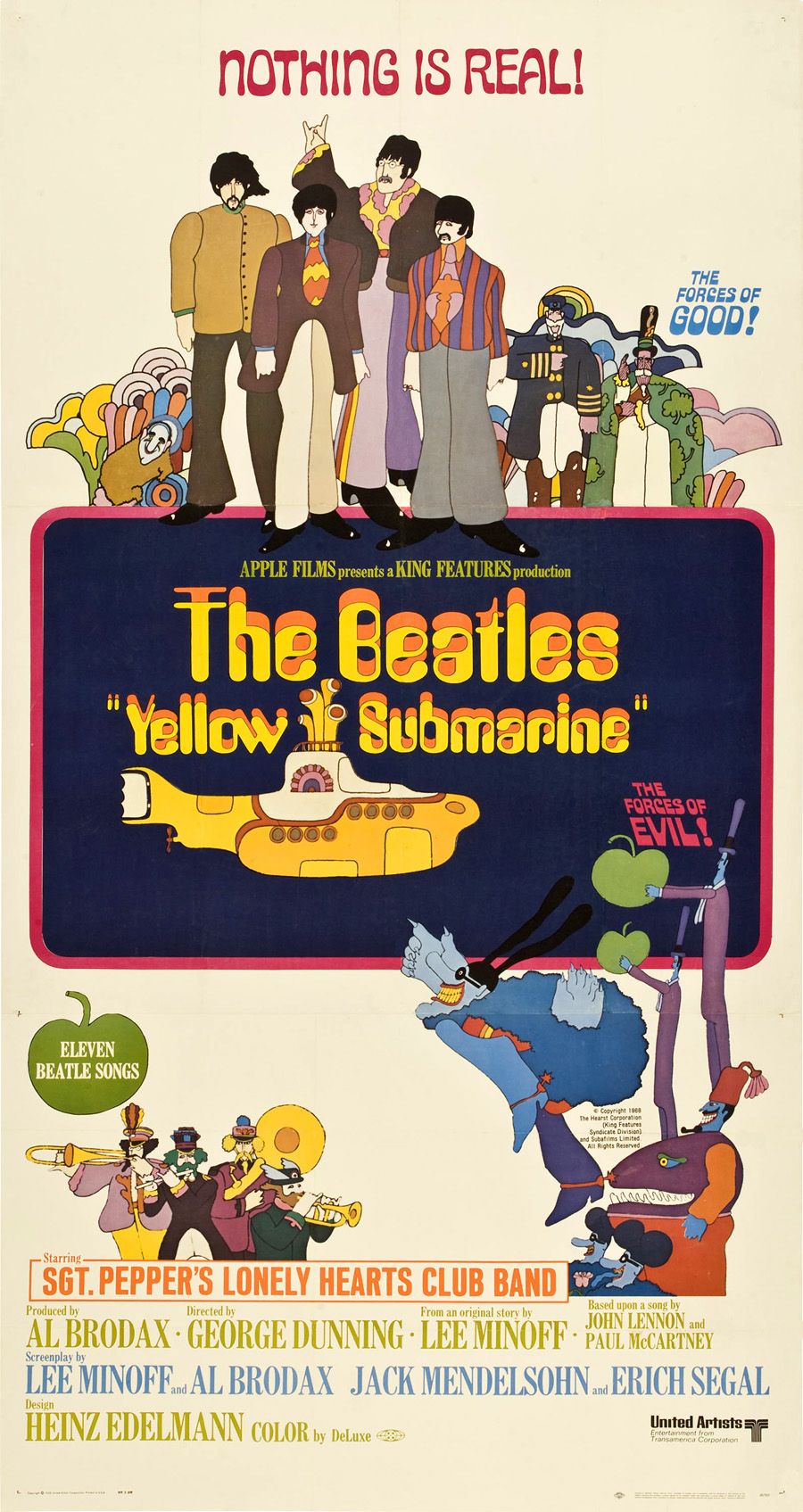 Many reviewers revealed the “man from the motor trade” to be an actual person. Paul stated, "People have since said that was Terry Doran, who was a friend who worked in a car showroom, but it was just fiction, like the sea captain in ‘Yellow Submarine,’ they weren’t real people. George Harrison said once he could only write songs from his personal experience, but they don’t have to exist for me. The feeling of them is enough. The man from the motor trade was just a typical sleazy character, the kind of guy that could pull a young bird by saying, ‘Would you like a ride in my car, darlin’?’ Nice plush interior, that’s how you pulled birds. So it was just a little bit of sleaze." In his book "The Lyrics," Paul adds: "I realize now that you can easily imagine a 'man from the motor trade' showing up in a Philip Larkin poem with all those travelling salesmen. I she meeting a man from the motor trade to buy a car of for a romantic liaison? It's left wide open.” Many reviewers revealed the “man from the motor trade” to be an actual person. Paul stated, "People have since said that was Terry Doran, who was a friend who worked in a car showroom, but it was just fiction, like the sea captain in ‘Yellow Submarine,’ they weren’t real people. George Harrison said once he could only write songs from his personal experience, but they don’t have to exist for me. The feeling of them is enough. The man from the motor trade was just a typical sleazy character, the kind of guy that could pull a young bird by saying, ‘Would you like a ride in my car, darlin’?’ Nice plush interior, that’s how you pulled birds. So it was just a little bit of sleaze." In his book "The Lyrics," Paul adds: "I realize now that you can easily imagine a 'man from the motor trade' showing up in a Philip Larkin poem with all those travelling salesmen. I she meeting a man from the motor trade to buy a car of for a romantic liaison? It's left wide open.”
 “The amazing thing about the song was how much it got right about my life,” explained Melanie Coe in “A Hard Day’s Write.” “It quoted the parents saying ‘we gave her everything money could buy’ which was very true in my case. I had two diamond rings, a mink coat, hand-made clothes in silk and cashmere and even my own car. Then there was the line ‘after living alone for so many years,’ which really struck home to me because I was an only child and I always felt alone…I heard the song when it came out and thought it was about someone like me but never dreamed it was actually about me...I must have been in my twenties when my mother said she’d seen Paul on television and he’d said that the song was based on a story in a newspaper. That’s when I started telling my friends it was about me.” “The amazing thing about the song was how much it got right about my life,” explained Melanie Coe in “A Hard Day’s Write.” “It quoted the parents saying ‘we gave her everything money could buy’ which was very true in my case. I had two diamond rings, a mink coat, hand-made clothes in silk and cashmere and even my own car. Then there was the line ‘after living alone for so many years,’ which really struck home to me because I was an only child and I always felt alone…I heard the song when it came out and thought it was about someone like me but never dreamed it was actually about me...I must have been in my twenties when my mother said she’d seen Paul on television and he’d said that the song was based on a story in a newspaper. That’s when I started telling my friends it was about me.”
 While McCartney’s lyrical detail about her leaving home was pure fiction, he oddly enough hit the nail on the head in many ways. "I did leave a note, yes,” Melanie Coe stated in a television interview. She did meet up with a gentleman and shared a flat with him in the Bayswater area of Central London. “He was a croupier,” Melanie Coe remembered, “but previously, oddly enough, he had actually worked in the car business, so he was a ‘man from the motor trade.’" While McCartney’s lyrical detail about her leaving home was pure fiction, he oddly enough hit the nail on the head in many ways. "I did leave a note, yes,” Melanie Coe stated in a television interview. She did meet up with a gentleman and shared a flat with him in the Bayswater area of Central London. “He was a croupier,” Melanie Coe remembered, “but previously, oddly enough, he had actually worked in the car business, so he was a ‘man from the motor trade.’"
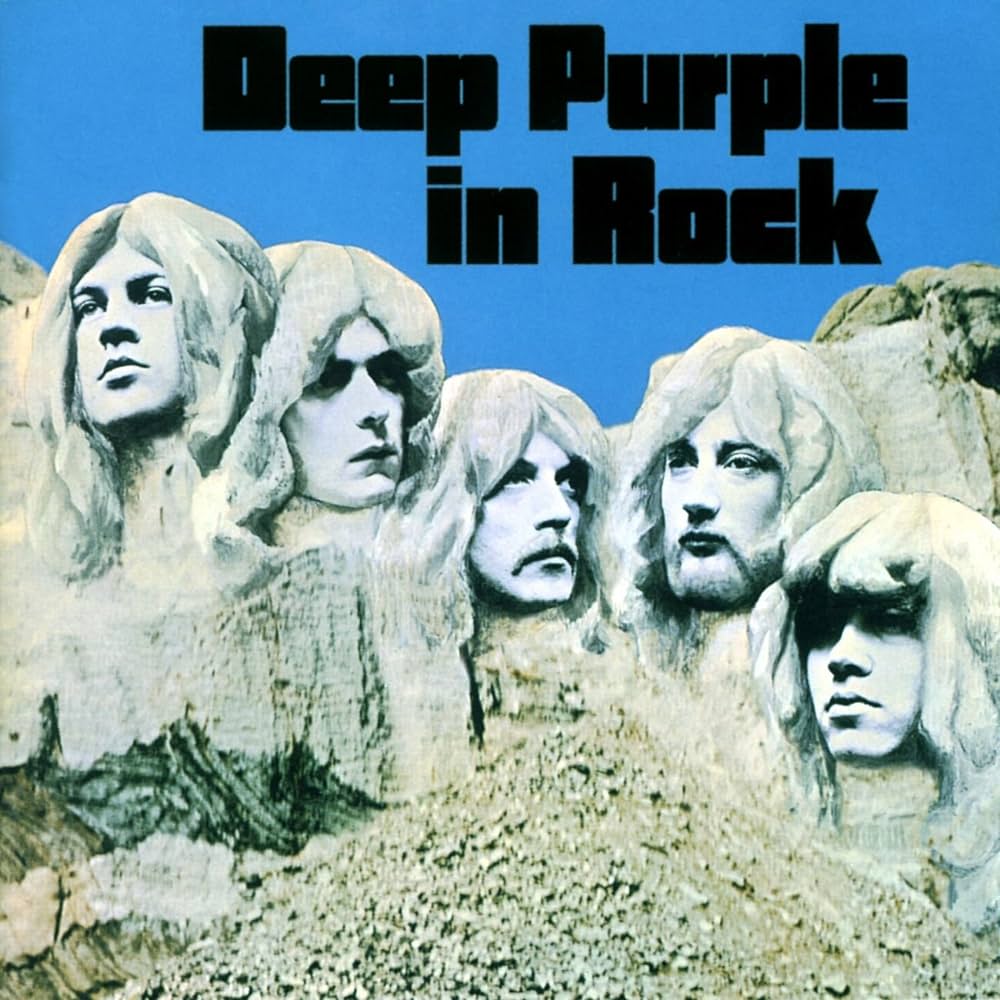 In an interview she did with The Guardian in 2008, she relates: "I was 17 by then and ran away leaving a note, just like in the song. I went to a doctor and he said I was pregnant, but I didn't know that before I left home. My best friend at the time was married to Richie Blackmore (future guitarist for Deep Purple, his wife at the time being Margit Volkmar) so she hid me at their house in Holloway Road. It's the first place my parents came to look, so I ran off with my boyfriend who was a groupier, although he had been 'in the motor trade' like it says in the song. I think my dad called up the newspapers - my picture was on the front pages. He made out that I must have been kidnapped, because why would I leave? They gave me everything, coats, cars. But not love. My parents found me after three weeks and I had an abortion." In an interview she did with The Guardian in 2008, she relates: "I was 17 by then and ran away leaving a note, just like in the song. I went to a doctor and he said I was pregnant, but I didn't know that before I left home. My best friend at the time was married to Richie Blackmore (future guitarist for Deep Purple, his wife at the time being Margit Volkmar) so she hid me at their house in Holloway Road. It's the first place my parents came to look, so I ran off with my boyfriend who was a groupier, although he had been 'in the motor trade' like it says in the song. I think my dad called up the newspapers - my picture was on the front pages. He made out that I must have been kidnapped, because why would I leave? They gave me everything, coats, cars. But not love. My parents found me after three weeks and I had an abortion."
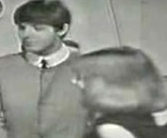 Odder still is the crazy coincidence concerning the main character Paul chose for the song. Four years earlier, on October 4th, 1963, thirteen-year-old Melanie Coe had actually met Paul during the filming of the hit British TV show “Ready Steady Go.” Melanie Coe was competing with three other contestants in a miming competition for the show, this episode being the first time The Beatles appeared on the program. Paul was recruited to judge the competition and he selected Melanie Coe as the winner. "Paul came over and shook my hand and handed me a Beatles album, which was the greatest thing that could happen to any little teenage girl." Odder still is the crazy coincidence concerning the main character Paul chose for the song. Four years earlier, on October 4th, 1963, thirteen-year-old Melanie Coe had actually met Paul during the filming of the hit British TV show “Ready Steady Go.” Melanie Coe was competing with three other contestants in a miming competition for the show, this episode being the first time The Beatles appeared on the program. Paul was recruited to judge the competition and he selected Melanie Coe as the winner. "Paul came over and shook my hand and handed me a Beatles album, which was the greatest thing that could happen to any little teenage girl."
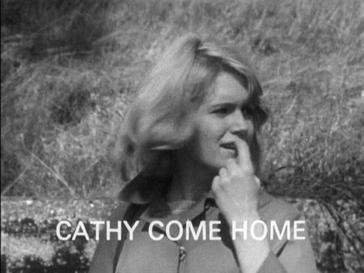 Retrospectively, in his 2021 book "The Lyrics," Paul reveals yet another possible inspiration for the song "She's Leaving Home." "In addition to the newspaper report, I'm pretty sure another influence was 'The Wednesday Play.' It was a weekly TV play that often times addressed 'big' social issues. It was the kind of thing people would be discussing at the bus stop Thursday morning. It was a very important part of the week. One of the most famous of these plays was 'Cathy Come Home,' directed by Ken Loach. It's a play about homelessness that a quarter of the UK population watched the night it was broadcast in November 1966...The detail of 'leaving a note that she hoped would say more' is one of the strongest moments in the song. Like many writers, I'm fascination by what's missing in a piece." Retrospectively, in his 2021 book "The Lyrics," Paul reveals yet another possible inspiration for the song "She's Leaving Home." "In addition to the newspaper report, I'm pretty sure another influence was 'The Wednesday Play.' It was a weekly TV play that often times addressed 'big' social issues. It was the kind of thing people would be discussing at the bus stop Thursday morning. It was a very important part of the week. One of the most famous of these plays was 'Cathy Come Home,' directed by Ken Loach. It's a play about homelessness that a quarter of the UK population watched the night it was broadcast in November 1966...The detail of 'leaving a note that she hoped would say more' is one of the strongest moments in the song. Like many writers, I'm fascination by what's missing in a piece."
Recording History
 Before recording began, Paul thought carefully about how the song should be presented on the album. “Paul was getting very keen on the possibilities of orchestral settings,” remembers Barry Miles in the book “Many Years From Now,” “and felt that ‘She’s Leaving Home’ would be best suited by this type of arrangement.” Therefore, on March 10th, 1967 or thereabouts, Paul contacted George Martin about his idea. Before recording began, Paul thought carefully about how the song should be presented on the album. “Paul was getting very keen on the possibilities of orchestral settings,” remembers Barry Miles in the book “Many Years From Now,” “and felt that ‘She’s Leaving Home’ would be best suited by this type of arrangement.” Therefore, on March 10th, 1967 or thereabouts, Paul contacted George Martin about his idea.
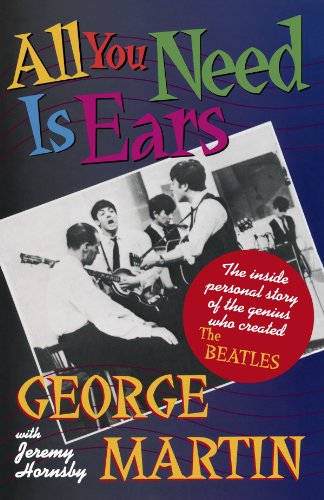 In his book “All You Need Is Ears,” George Martin describes his take on this discussion with Paul: “During the making of ‘Pepper’ he was also to give me one of the biggest hurts of my life…At that time I was still having to record all my other artists. One day Paul rang me to say: ‘I’ve got a song I want you to work with me on. So, can you come round tomorrow afternoon? I want to get it done real quickly. We’ll book an orchestra, and you can score it.’ ‘I can’t tomorrow, Paul. I’m recording Cilla (Black) at 2:30.’ ‘Come on. You can come round at 2:00.’ ‘No, I can’t, I have got a session on.’ ‘Oh, all right, then,’ Paul said, and that ended the conversation.” In his book “All You Need Is Ears,” George Martin describes his take on this discussion with Paul: “During the making of ‘Pepper’ he was also to give me one of the biggest hurts of my life…At that time I was still having to record all my other artists. One day Paul rang me to say: ‘I’ve got a song I want you to work with me on. So, can you come round tomorrow afternoon? I want to get it done real quickly. We’ll book an orchestra, and you can score it.’ ‘I can’t tomorrow, Paul. I’m recording Cilla (Black) at 2:30.’ ‘Come on. You can come round at 2:00.’ ‘No, I can’t, I have got a session on.’ ‘Oh, all right, then,’ Paul said, and that ended the conversation.”
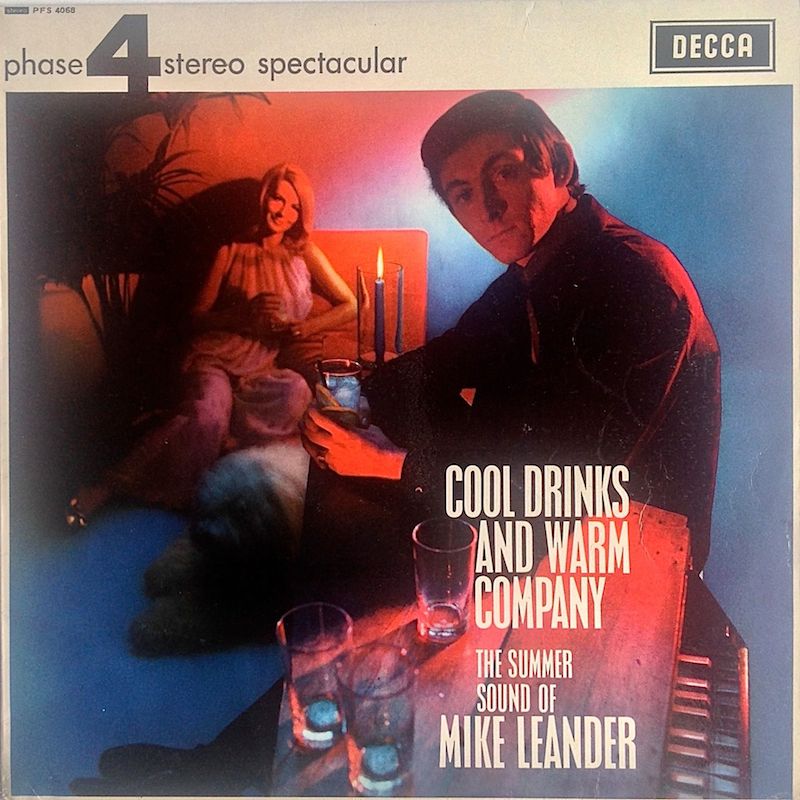 “What he did then, as I discovered later, was to acquire Neil Aspinall, the road manager, to ring round and find someone else to do the score for him, simply because I couldn’t do it at that short notice. In the end he found Mike Leander, who could. The following day Paul presented me with it and said, ‘Here we are. I’ve got a score. We can record it now.’” “What he did then, as I discovered later, was to acquire Neil Aspinall, the road manager, to ring round and find someone else to do the score for him, simply because I couldn’t do it at that short notice. In the end he found Mike Leander, who could. The following day Paul presented me with it and said, ‘Here we are. I’ve got a score. We can record it now.’”
“I recorded it, with a few alterations to make it work better, but I was hurt. I thought: Paul, you could have waited, for I really couldn’t have done it that afternoon, unless I had just devoted everything to The Beatles and never dealt with any other artist. Paul obviously didn’t think it was important that I should do everything. To me it was. I wasn’t getting much out of it from a financial point of view, but at least I was getting satisfaction. The score itself was good enough, and still holds up today, but it was the only score that was ever done by anyone else during all my time with The Beatles. However, it had happened, and there was nothing to be done about it.”
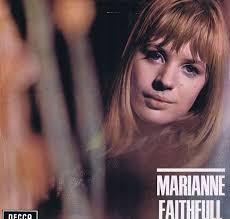 Mike Leander was a freelance producer and arranger whom Paul had met at Decca Studios when attending the session for Marianne Faithfull's version of “Yesterday.” Apparently Paul remembered meeting him at this recording session and got his phone number by dispatching Neil Aspinall to find it for him. Mike Leander was a freelance producer and arranger whom Paul had met at Decca Studios when attending the session for Marianne Faithfull's version of “Yesterday.” Apparently Paul remembered meeting him at this recording session and got his phone number by dispatching Neil Aspinall to find it for him.
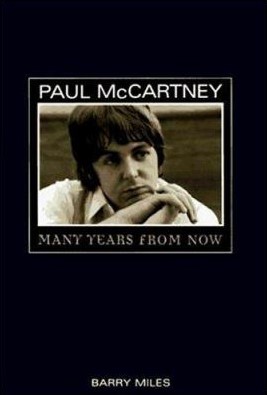 Paul explains his side of the story in “Many Years From Now”: “I rang up George Martin and said, ‘I’m really on to this song, George. I want to record it next week.’ I’m really hot to record it, I’ve got one of those ‘I’ve got to go, I’ve got to go!’ feelings and when you get them, you don’t want anything to stop you, you feel like if you lose this impetus, you’ll lose something valuable. So I rang him and I said, ‘I need you to arrange it.’ He said, ‘I’m sorry, Paul, I’ve got a Cilla (Black) session.’ And I though, F**king hell! After all this time of us working together, he ought to put himself out. It was probably unreasonable to expect him to.” Paul explains his side of the story in “Many Years From Now”: “I rang up George Martin and said, ‘I’m really on to this song, George. I want to record it next week.’ I’m really hot to record it, I’ve got one of those ‘I’ve got to go, I’ve got to go!’ feelings and when you get them, you don’t want anything to stop you, you feel like if you lose this impetus, you’ll lose something valuable. So I rang him and I said, ‘I need you to arrange it.’ He said, ‘I’m sorry, Paul, I’ve got a Cilla (Black) session.’ And I though, F**king hell! After all this time of us working together, he ought to put himself out. It was probably unreasonable to expect him to.”
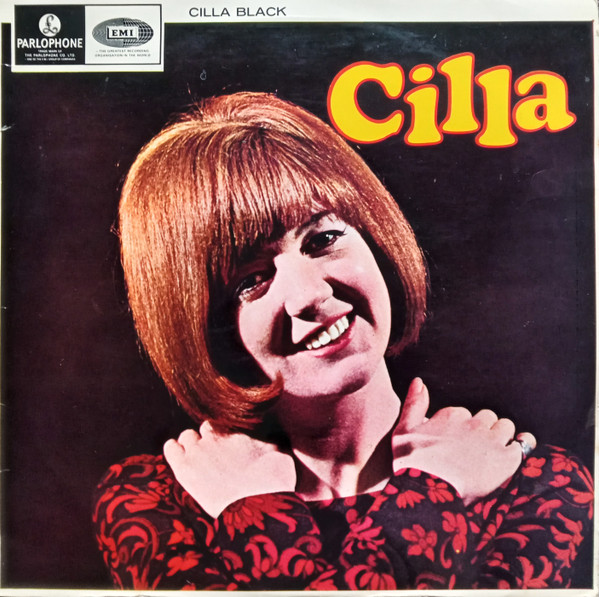 “Anyway, I said, ‘Well, fine, thanks George,’ but I was so hot to trot that I called up Mike Leander, another arranger. I got him to come over to Cavendish Avenue and I showed him what I wanted, strings, and he said, ‘Leave it with me.’ It is one of the first times I actually let anyone arrange something and then reviewed it later, which I don’t like as a practice. It’s much easier if I just stay with them. Anyway he took it away, did it, and George Martin was very hurt, apparently. Extremely hurt, but of course I was hurt that he didn’t have time for me but he had time for Cilla (Black).” “Anyway, I said, ‘Well, fine, thanks George,’ but I was so hot to trot that I called up Mike Leander, another arranger. I got him to come over to Cavendish Avenue and I showed him what I wanted, strings, and he said, ‘Leave it with me.’ It is one of the first times I actually let anyone arrange something and then reviewed it later, which I don’t like as a practice. It’s much easier if I just stay with them. Anyway he took it away, did it, and George Martin was very hurt, apparently. Extremely hurt, but of course I was hurt that he didn’t have time for me but he had time for Cilla (Black).”
George Martin added: “It was the song that got away. I minded like hell! It was the song I wanted to do...It was just one of those silly things. He was so damned impatient and I was up to my eyes with other work and I just couldn’t cope. But Paul realizes now, though he was surprised that I was upset.”
 At any rate, all hurt feelings set aside, the first recording session for “She’s Leaving Home” was booked for EMI Studio Two on March 17th, 1967. It appears that Paul was the only Beatle present on this day since this session concerned the recording of the strings only. The instrumentalists booked for this day comprised Erich Gruenberg (leader), Derek Jacobs, Trevor Williams and Jose Luis Garcia (violins), John Underwood and Stephen Shingles (violas), Dennis Vigay and Alan Dalziel (cellos), Gordon Pearce (double-bass) and Sheila Bromberg (harp). The late Sheila Bromberg (who passed away on August 17th, 2021, aged 92) was the first woman to appear on a Beatles recording (unless you count Pattie Boyd and Marianne Faithfull’s scant contributions to “Yellow Submarine”) At any rate, all hurt feelings set aside, the first recording session for “She’s Leaving Home” was booked for EMI Studio Two on March 17th, 1967. It appears that Paul was the only Beatle present on this day since this session concerned the recording of the strings only. The instrumentalists booked for this day comprised Erich Gruenberg (leader), Derek Jacobs, Trevor Williams and Jose Luis Garcia (violins), John Underwood and Stephen Shingles (violas), Dennis Vigay and Alan Dalziel (cellos), Gordon Pearce (double-bass) and Sheila Bromberg (harp). The late Sheila Bromberg (who passed away on August 17th, 2021, aged 92) was the first woman to appear on a Beatles recording (unless you count Pattie Boyd and Marianne Faithfull’s scant contributions to “Yellow Submarine”)
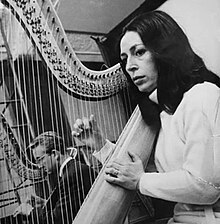 Documents for this session indicate that it began at 7 pm, but harpist Sheila Bromberg recalls otherwise in a 2011 BBC interview. “There were people called fixers. This fixer called me up and asked, 'Are you free from 9 o’clock at night until midnight?' And I thought, ‘Do I really want a session from 9 to midnight?’ But he gave me a lot of work, so I didn’t want to turn him down. So I was sitting here (in EMI Studio Two) at half-passed eight tuning the harp.” Documents for this session indicate that it began at 7 pm, but harpist Sheila Bromberg recalls otherwise in a 2011 BBC interview. “There were people called fixers. This fixer called me up and asked, 'Are you free from 9 o’clock at night until midnight?' And I thought, ‘Do I really want a session from 9 to midnight?’ But he gave me a lot of work, so I didn’t want to turn him down. So I was sitting here (in EMI Studio Two) at half-passed eight tuning the harp.”
 George Martin prepared the sheet music to be presented to the ten musicians present at this session and gave it to them to rehearse before the 9 pm start time arrived. “I had to change the score a little bit, but not very much. Mike Leander did a good job,” George Martin humbly admits. Sheila Bromberg recalls: “Suddenly a piece of music was plunked on my music stand and I gave it a brief look. (The fixer) did not tell me at the time that this was for The Beatles. You never knew who you were going to play with…And then this voice said, ‘Well, whatcha got on the duss?,” meaning ‘What’s written on the music?’ I recognized the Liverpool accent. I turned around and, of course, it was Paul McCartney.” George Martin prepared the sheet music to be presented to the ten musicians present at this session and gave it to them to rehearse before the 9 pm start time arrived. “I had to change the score a little bit, but not very much. Mike Leander did a good job,” George Martin humbly admits. Sheila Bromberg recalls: “Suddenly a piece of music was plunked on my music stand and I gave it a brief look. (The fixer) did not tell me at the time that this was for The Beatles. You never knew who you were going to play with…And then this voice said, ‘Well, whatcha got on the duss?,” meaning ‘What’s written on the music?’ I recognized the Liverpool accent. I turned around and, of course, it was Paul McCartney.”
 Six takes of the song were recorded on this day, four of which were complete. Of these four, being that these were performed by professional session musicians, their performances had been nearly flawless and identical. However, somebody in particular was fussy about what he wanted. “First of all I played exactly what was written,” Sheila Bromberg confirms. “Then I stopped and (Paul) exclaimed, ‘No, I don’t want that. I want something, ehhhh…’” After she altered her approach and made other attempts, Paul would just repeat, “No, I don’t want that. I want something, ehhh…” “I think he had an idea in his head of what he wanted it to sound like but he couldn’t describe it, he couldn’t express it, and he was waiting for somebody to bring it out of the air. During the session, after each time we played it, Paul, we would hear from the controls, (announce) ‘No, I don’t want that. I want something, ehhh...’ So we’d play it again.” Six takes of the song were recorded on this day, four of which were complete. Of these four, being that these were performed by professional session musicians, their performances had been nearly flawless and identical. However, somebody in particular was fussy about what he wanted. “First of all I played exactly what was written,” Sheila Bromberg confirms. “Then I stopped and (Paul) exclaimed, ‘No, I don’t want that. I want something, ehhhh…’” After she altered her approach and made other attempts, Paul would just repeat, “No, I don’t want that. I want something, ehhh…” “I think he had an idea in his head of what he wanted it to sound like but he couldn’t describe it, he couldn’t express it, and he was waiting for somebody to bring it out of the air. During the session, after each time we played it, Paul, we would hear from the controls, (announce) ‘No, I don’t want that. I want something, ehhh...’ So we’d play it again.”
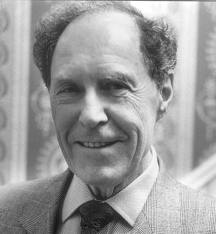 “Came midnight, and the string section were really fed up. And eventually, the leader of the (studio) orchestra stood up, Erich Gruenberg, tucked his violin under his arm, and said, ‘Now it is midnight, we have to go home, because we are working in the morning.’ So a voice (Paul) from the control room said, ‘Well, I suppose that’s that then.’ And then we all went home.” With barely noticeable difference between the performance of the takes, both "take one" and "take six" were marked as best and the session was complete for the day by 12:45 am. “Came midnight, and the string section were really fed up. And eventually, the leader of the (studio) orchestra stood up, Erich Gruenberg, tucked his violin under his arm, and said, ‘Now it is midnight, we have to go home, because we are working in the morning.’ So a voice (Paul) from the control room said, ‘Well, I suppose that’s that then.’ And then we all went home.” With barely noticeable difference between the performance of the takes, both "take one" and "take six" were marked as best and the session was complete for the day by 12:45 am.
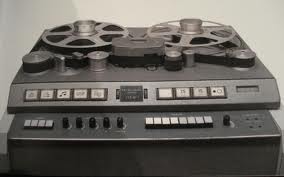 Three days later, on March 20th, 1967, the next session for “She’s Leaving Home” was booked for 7 pm at EMI Studio Two with at least two Beatles in attendance, Paul and John. The first task at hand was to free up space for overdubs of the vocals, since all four tracks on the four-track tape were filled with the strings from three days ago. This could easily be accomplished by making a tape reduction onto another four-track tape to leave open two tracks for the overdubs. However, they still couldn’t decide whether "take one" or "take six" was really best (there being hardly a difference anyway), so they did reduction mixes for both; "take one" received three reduction mixes (takes seven through nine) and "take six" received one ("take 10"). Thereafter, the final decision was made: the third reduction mix of "take one," at this point considered "take nine," was the winner. Therefore, as it came to be, the very first performance from the ten-piece string section was the one that was used, Paul insisting that they stick around until midnight for no reason whatsoever. Three days later, on March 20th, 1967, the next session for “She’s Leaving Home” was booked for 7 pm at EMI Studio Two with at least two Beatles in attendance, Paul and John. The first task at hand was to free up space for overdubs of the vocals, since all four tracks on the four-track tape were filled with the strings from three days ago. This could easily be accomplished by making a tape reduction onto another four-track tape to leave open two tracks for the overdubs. However, they still couldn’t decide whether "take one" or "take six" was really best (there being hardly a difference anyway), so they did reduction mixes for both; "take one" received three reduction mixes (takes seven through nine) and "take six" received one ("take 10"). Thereafter, the final decision was made: the third reduction mix of "take one," at this point considered "take nine," was the winner. Therefore, as it came to be, the very first performance from the ten-piece string section was the one that was used, Paul insisting that they stick around until midnight for no reason whatsoever.
 The next job was to overlay the vocals. As was their habit during the recording of the album, they liked to experiment with tweaking the tape speed to get different affects. In the case of "She's Leaving Home," a decision was then made to record their vocals with the orchestral track sped up slightly, changing the pitch from E major to F major. Engineer Geoff Emerick, in “Here, There And Everywhere,” confirms the eyewitness details about this overdub. “There were still two available tracks on the multitrack tape, but Paul felt strongly that he wanted certain lines double-tracked, and he also wanted the strings to remain in stereo. The only solution was to have them sing their vocals at the same time, recording each pass on a single track.” The next job was to overlay the vocals. As was their habit during the recording of the album, they liked to experiment with tweaking the tape speed to get different affects. In the case of "She's Leaving Home," a decision was then made to record their vocals with the orchestral track sped up slightly, changing the pitch from E major to F major. Engineer Geoff Emerick, in “Here, There And Everywhere,” confirms the eyewitness details about this overdub. “There were still two available tracks on the multitrack tape, but Paul felt strongly that he wanted certain lines double-tracked, and he also wanted the strings to remain in stereo. The only solution was to have them sing their vocals at the same time, recording each pass on a single track.”
 "The lights in the studio were turned off to acquire the mood; the sole source of illumination being a table lamp next to the wall. The two Beatles, lifelong friends and collaborators, sat on high stools, facing each other, studying each other’s lips intently for phrasing. Watching them, I recall thinking that John’s and Paul’s voices were so different yet so perfectly complemented each other’s, just like their personalities and approach to music-making. It wasn’t an easy vocal track to nail down either. At one point there was a long discussion about getting the right amount of emotion into the lyric. Paul was quite the perfectionist by this time, and he was really pissing John off by having him sing the same line over and over again. Up in the control room, I had to do a bit of tweaking to get the correct perspective and contrast between the two vocals." "The lights in the studio were turned off to acquire the mood; the sole source of illumination being a table lamp next to the wall. The two Beatles, lifelong friends and collaborators, sat on high stools, facing each other, studying each other’s lips intently for phrasing. Watching them, I recall thinking that John’s and Paul’s voices were so different yet so perfectly complemented each other’s, just like their personalities and approach to music-making. It wasn’t an easy vocal track to nail down either. At one point there was a long discussion about getting the right amount of emotion into the lyric. Paul was quite the perfectionist by this time, and he was really pissing John off by having him sing the same line over and over again. Up in the control room, I had to do a bit of tweaking to get the correct perspective and contrast between the two vocals."
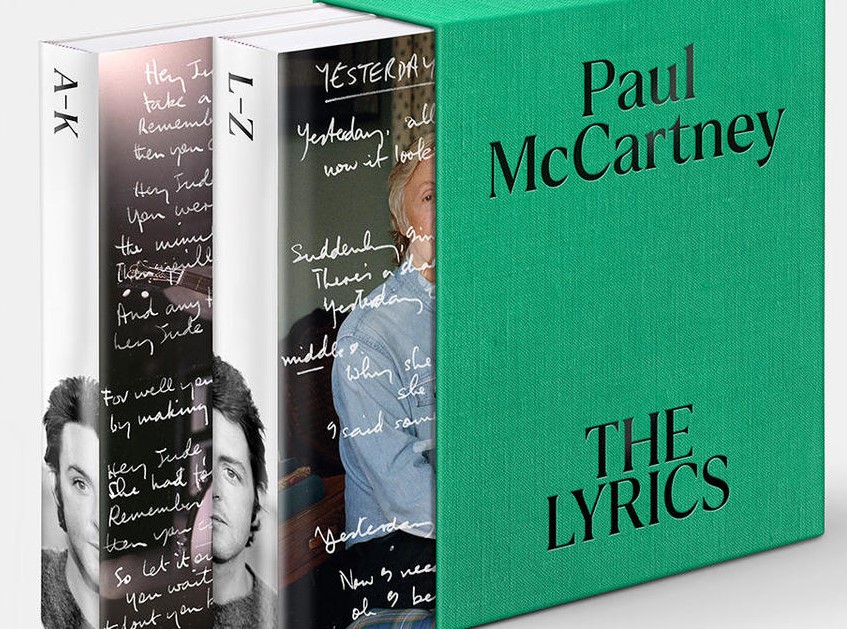 Paul describes this vocal session in his 2021 book "The Lyrics": "When we recorded 'She's Leaving Home' it was almost like a shooting script for 'The Wednesday Play' (detailed above). 'Clutching her handkerchief / Quietly turning the backdoor key.' On one hand (the listener has) the narrator who's describing the action ('She's leaving home') and then there are a couple of people in the spotlight, a mini Greek chorus, who fade in and out ('We gave her most of our lives')...I'm not sure whether a song like this could be written nowadays. Funnily enough, a musical theatre setting is where this kind of story song gets written now. So, maybe Lennon and McCartney did write musicals after all." Paul describes this vocal session in his 2021 book "The Lyrics": "When we recorded 'She's Leaving Home' it was almost like a shooting script for 'The Wednesday Play' (detailed above). 'Clutching her handkerchief / Quietly turning the backdoor key.' On one hand (the listener has) the narrator who's describing the action ('She's leaving home') and then there are a couple of people in the spotlight, a mini Greek chorus, who fade in and out ('We gave her most of our lives')...I'm not sure whether a song like this could be written nowadays. Funnily enough, a musical theatre setting is where this kind of story song gets written now. So, maybe Lennon and McCartney did write musicals after all."
 This track now being completed, and after various interviews and recorded speeches were taped by John and Paul, the mono mix was created to complete the session’s activity. This was done in the control room of EMI Studio Two by George Martin, Geoff Emerick and 2nd engineer Ken Scott, no doubt with Paul and John still present. They did six attempts at this mono mix, the sixth being deemed the best. Paul still wanted something to be done with the opening harp segment of the song, so different experiments were done. The first mix had them treating it with ADT (Artificial Double Tracking) to give the harp a richer sound, but they ended up scrapping this idea. The sixth mix had them adding a doubling effect to the harp, which is what they ended up keeping. This track now being completed, and after various interviews and recorded speeches were taped by John and Paul, the mono mix was created to complete the session’s activity. This was done in the control room of EMI Studio Two by George Martin, Geoff Emerick and 2nd engineer Ken Scott, no doubt with Paul and John still present. They did six attempts at this mono mix, the sixth being deemed the best. Paul still wanted something to be done with the opening harp segment of the song, so different experiments were done. The first mix had them treating it with ADT (Artificial Double Tracking) to give the harp a richer sound, but they ended up scrapping this idea. The sixth mix had them adding a doubling effect to the harp, which is what they ended up keeping.
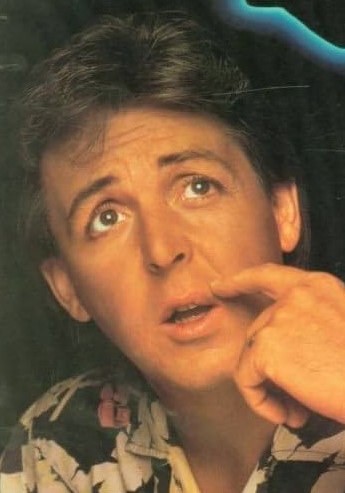 “That’s what he was after,” Sheila Bromberg exclaimed when she heard the final product. However, Paul is a little sketchy on this detail. “I don’t like the echo on the harp, but that must be George (Martin) rather than Mike Leander, or, to give him his due, it might have been one of us saying, ‘Stick some echo on that harp.’ You just can’t tell.” I think that Paul forgot about his insistence and never did get the sound he wanted. In any event, Sheila Bromberg summed up her feelings about the results of her performance by stating: "I feel proud that that piece of work has given such a tremendous amount of pleasure. But what amazes me is that, of all the music I've performed, I'm noted for just four bars." “That’s what he was after,” Sheila Bromberg exclaimed when she heard the final product. However, Paul is a little sketchy on this detail. “I don’t like the echo on the harp, but that must be George (Martin) rather than Mike Leander, or, to give him his due, it might have been one of us saying, ‘Stick some echo on that harp.’ You just can’t tell.” I think that Paul forgot about his insistence and never did get the sound he wanted. In any event, Sheila Bromberg summed up her feelings about the results of her performance by stating: "I feel proud that that piece of work has given such a tremendous amount of pleasure. But what amazes me is that, of all the music I've performed, I'm noted for just four bars."
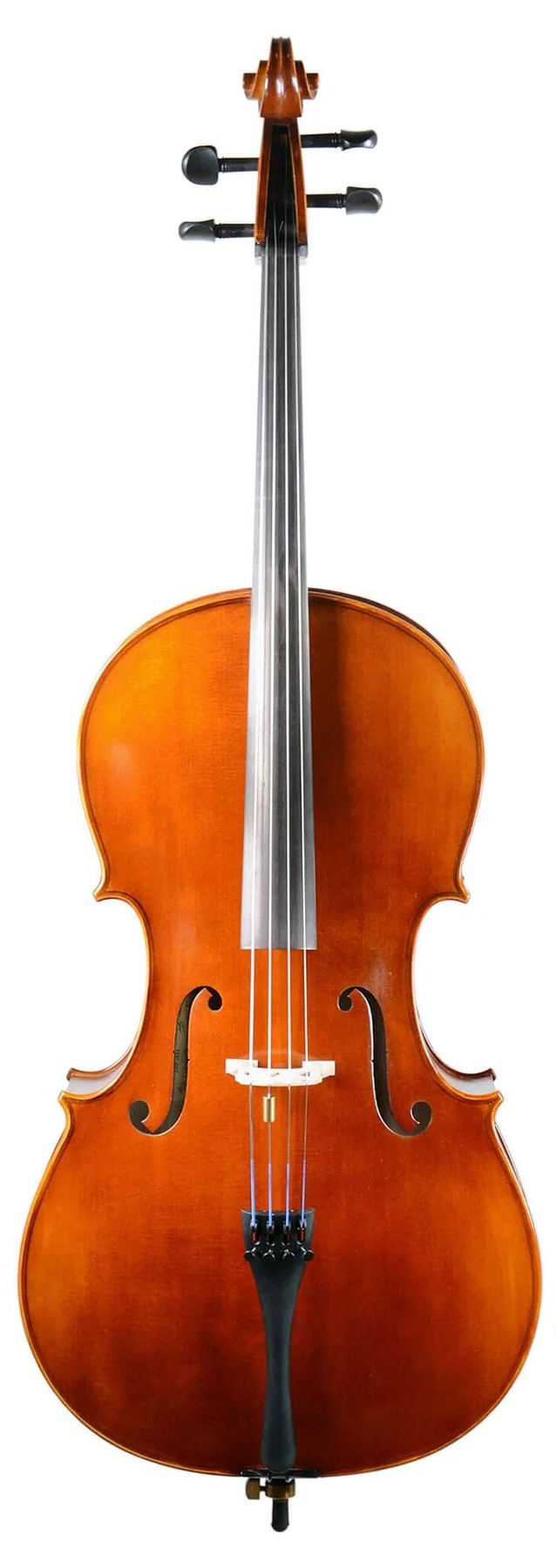 At this stage a decision was made to make two edits to the track, deleting a small cello phrase from the ending of both the first and second chorus just after the words “for so many years” and just before the following verse begins in both instances. The unedited orchestral takes of the song (both "take one" and "take six") can be heard on the bonus discs of the 50th Anniversary Editions of the album as released in 2017. With these edits accomplished and a slight bit of reverb added, and also remembering to play the tape back slightly faster so their vocals would sound natural, the mono mix was complete and the session was over, it already being 3:30 am the next morning. At this stage a decision was made to make two edits to the track, deleting a small cello phrase from the ending of both the first and second chorus just after the words “for so many years” and just before the following verse begins in both instances. The unedited orchestral takes of the song (both "take one" and "take six") can be heard on the bonus discs of the 50th Anniversary Editions of the album as released in 2017. With these edits accomplished and a slight bit of reverb added, and also remembering to play the tape back slightly faster so their vocals would sound natural, the mono mix was complete and the session was over, it already being 3:30 am the next morning.
 The stereo mix wasn’t made until April 17th, 1967, in the control room of EMI Studio Two by George Martin, Geoff Emerick and 2nd engineer Richard Lush. The violins and harp are panned over to the right channel while the violas, cellos and double-bass were panned to the left, all vocals being centered in the mix. They once again made sure to edit out the cello phrases at the end of the choruses as they had done on the mono mix. While popular opinion has it that more emphasis was still being given to mono mixes at this point, Paul did get his wish to have stereo strings in this song, he apparently thinking of the consumers who preferred to hear Beatles music in stereo. The stereo mix wasn’t made until April 17th, 1967, in the control room of EMI Studio Two by George Martin, Geoff Emerick and 2nd engineer Richard Lush. The violins and harp are panned over to the right channel while the violas, cellos and double-bass were panned to the left, all vocals being centered in the mix. They once again made sure to edit out the cello phrases at the end of the choruses as they had done on the mono mix. While popular opinion has it that more emphasis was still being given to mono mixes at this point, Paul did get his wish to have stereo strings in this song, he apparently thinking of the consumers who preferred to hear Beatles music in stereo.
 One thing that was forgotten while making this stereo mix was to speed up the tape to the degree that would make the vocals sound natural. This mix, which incidentally is the version most listeners have come to know, was made with the tape running at the standard speed which allows for the musicians to be heard naturally in the key of E major but makes The Beatles' vocals sound a little laborious in the process. This adds to the argument that less effort was exerted in making the stereo mixes for this album, details being forgotten and then not corrected since it was thought that the majority of consumers wouldn't hear this anyway. In any event, a bit of reverb was added and the opening harp segment was doubled as they were on the mono mix. One thing that was forgotten while making this stereo mix was to speed up the tape to the degree that would make the vocals sound natural. This mix, which incidentally is the version most listeners have come to know, was made with the tape running at the standard speed which allows for the musicians to be heard naturally in the key of E major but makes The Beatles' vocals sound a little laborious in the process. This adds to the argument that less effort was exerted in making the stereo mixes for this album, details being forgotten and then not corrected since it was thought that the majority of consumers wouldn't hear this anyway. In any event, a bit of reverb was added and the opening harp segment was doubled as they were on the mono mix.
 Sometime in 2016 or 2017, George Martin's son Giles Martin, along with engineer Sam Okell, returned to the master tapes of "She's Leaving Home" to create a new stereo mix of the song for release on the 50th Anniversary editions of the "Sgt. Pepper" album. He also created mixes of both "take one" and "take six" of the instrumental recordings before Paul and John added their vocals, complete with the small cello phrases still in place and George Martin's count off for the musicians ("one-two-three, two-two-three"). These instrumental versions are included in deluxe editions of the album as released in 2017, "take one" also being featured in "Anthology 4." Sometime in 2016 or 2017, George Martin's son Giles Martin, along with engineer Sam Okell, returned to the master tapes of "She's Leaving Home" to create a new stereo mix of the song for release on the 50th Anniversary editions of the "Sgt. Pepper" album. He also created mixes of both "take one" and "take six" of the instrumental recordings before Paul and John added their vocals, complete with the small cello phrases still in place and George Martin's count off for the musicians ("one-two-three, two-two-three"). These instrumental versions are included in deluxe editions of the album as released in 2017, "take one" also being featured in "Anthology 4."
A live recording of “She’s Leaving Home” by Paul and his band was made in Mexico City in early November of 2002, this version gracing the international album “Back In The World.”
Song Structure and Style
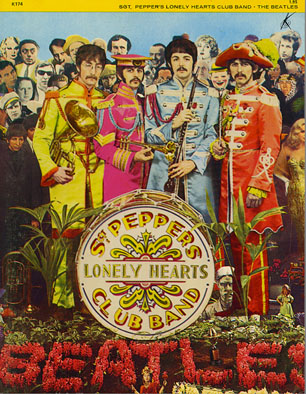 The Beatles return to a waltz tempo again for this track, having already mastered it with conventional pop music instruments with “This Boy,” “Baby’s In Black,” “Yes It Is” and others. They take it to new dimensions this time around with a string arrangement that harkens back to the turn of the century. Structurally, the song is made up of a ‘verse/ verse/ refrain/ verse/ verse/ refrain/ verse/ refrain’ formula (or aabaabab) with a brief intro and a suitable conclusion which pulls the full picture together quite nicely. The Beatles return to a waltz tempo again for this track, having already mastered it with conventional pop music instruments with “This Boy,” “Baby’s In Black,” “Yes It Is” and others. They take it to new dimensions this time around with a string arrangement that harkens back to the turn of the century. Structurally, the song is made up of a ‘verse/ verse/ refrain/ verse/ verse/ refrain/ verse/ refrain’ formula (or aabaabab) with a brief intro and a suitable conclusion which pulls the full picture together quite nicely.
 Parsing out the song in 3/4 time (as most sheet music does), the brief introduction becomes four full measures comprising the fragrant harp figure performed twice and artificially doubled (or echoed) for effect. The first verse, as with all of the rest, is sixteen measures long and begins with McCartney’s vocals directly on the downbeat. The harp, with the echo effect turned off, now becomes the rhythm instrument of the piece as it plucks the chords on each beat, this being the only instrument heard for the first five measures of the verse. The violas emerge in the sixth measure to fill in the gap left as Paul finishes his first lyric “as the day begins.” The violins enter the picture in the ninth measure in conjunction with the violas as a backdrop to Paul’s next two sung lines which finish off the first verse. Parsing out the song in 3/4 time (as most sheet music does), the brief introduction becomes four full measures comprising the fragrant harp figure performed twice and artificially doubled (or echoed) for effect. The first verse, as with all of the rest, is sixteen measures long and begins with McCartney’s vocals directly on the downbeat. The harp, with the echo effect turned off, now becomes the rhythm instrument of the piece as it plucks the chords on each beat, this being the only instrument heard for the first five measures of the verse. The violas emerge in the sixth measure to fill in the gap left as Paul finishes his first lyric “as the day begins.” The violins enter the picture in the ninth measure in conjunction with the violas as a backdrop to Paul’s next two sung lines which finish off the first verse.
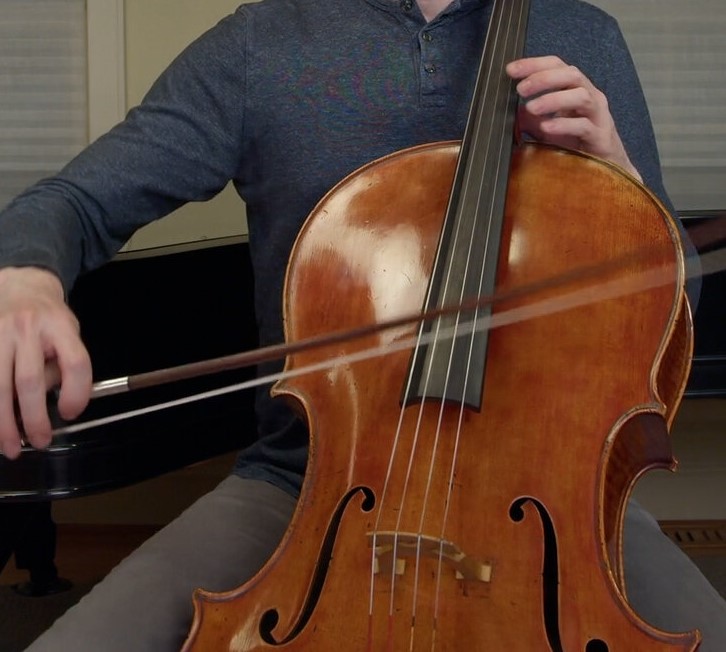 The second verse comes in afterward mid-sentence from the previous verse (“that she hoped would say more, she goes / downstairs”). While the harp still keeps the rhythm going, the cellos here accentuate the chord changes for the first five measures while the remaining string instuments enter after the word “handkerchief” to perform a beautiful harmony line for measures six through eight. All instruments play simple harmony phrases during the final two lines of the second verse as a backdrop to the liberation of the young girl’s unnoticed escape from her home (“stepping outside she is free”). The second verse comes in afterward mid-sentence from the previous verse (“that she hoped would say more, she goes / downstairs”). While the harp still keeps the rhythm going, the cellos here accentuate the chord changes for the first five measures while the remaining string instuments enter after the word “handkerchief” to perform a beautiful harmony line for measures six through eight. All instruments play simple harmony phrases during the final two lines of the second verse as a backdrop to the liberation of the young girl’s unnoticed escape from her home (“stepping outside she is free”).
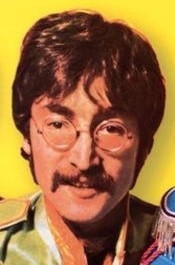 Next is the nineteen-measure refrain (twenty measures long before the final measure was edited out in the control room) which premiers the point/counterpoint feature of the song as suggested by Lennon. Even though the parents are unaware of their child’s departure at this point, their haunting view of the situation, displayed here with the double-tracked Lennon vocal drenched in reverb, is depicted in their explanation of how they “sacrificed most of their lives” to provide her with “everything money could buy.” Next is the nineteen-measure refrain (twenty measures long before the final measure was edited out in the control room) which premiers the point/counterpoint feature of the song as suggested by Lennon. Even though the parents are unaware of their child’s departure at this point, their haunting view of the situation, displayed here with the double-tracked Lennon vocal drenched in reverb, is depicted in their explanation of how they “sacrificed most of their lives” to provide her with “everything money could buy.”
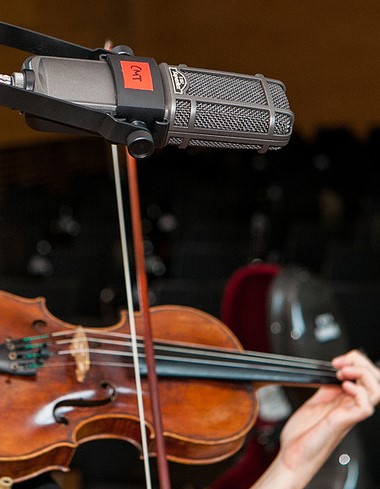 Paul’s sustained falsetto revealing of the song’s title has also been double-tracked here in contrast to the intimate single-tracked storytelling tone of the earlier verses. With the full gamut of the musicians in tow, this three phrase segment takes up the first twelve measures as McCartney interrupts Lennon’s last phrase to narrate the moral of the story thus far: “She’s leaving home after living alone for so many years.” This finishes off the eighteenth measure, the final nineteenth measure taken up with three staccato chops from the violins. One other significant element needing to be mentioned is the touching “bye bye” John depicts the parents acceptingly exclaiming in the sixteenth and seventeenth measures. Paul’s sustained falsetto revealing of the song’s title has also been double-tracked here in contrast to the intimate single-tracked storytelling tone of the earlier verses. With the full gamut of the musicians in tow, this three phrase segment takes up the first twelve measures as McCartney interrupts Lennon’s last phrase to narrate the moral of the story thus far: “She’s leaving home after living alone for so many years.” This finishes off the eighteenth measure, the final nineteenth measure taken up with three staccato chops from the violins. One other significant element needing to be mentioned is the touching “bye bye” John depicts the parents acceptingly exclaiming in the sixteenth and seventeenth measures.
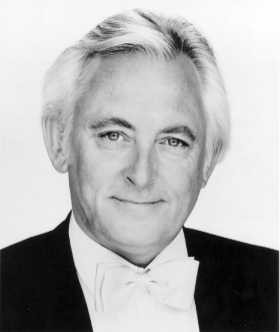 Next follows the third and fourth verses paired together as the first two were, all of the string players playing subdued during the depiction of the mother discovering the “letter that’s lying there” revealing her daughter’s departure in the third verse. Also at mid-sentence, the fourth verse begins (“at the top of the stairs, she breaks / down”) and then adds arguably the most emotional instrumental segment in Mike Leander’s arrangement. The staccato violins, as if tapping out an emergency-like "morse code" signal, reveal the mother’s utter shock as she wakes her husband with the news “our baby’s gone!” Next follows the third and fourth verses paired together as the first two were, all of the string players playing subdued during the depiction of the mother discovering the “letter that’s lying there” revealing her daughter’s departure in the third verse. Also at mid-sentence, the fourth verse begins (“at the top of the stairs, she breaks / down”) and then adds arguably the most emotional instrumental segment in Mike Leander’s arrangement. The staccato violins, as if tapping out an emergency-like "morse code" signal, reveal the mother’s utter shock as she wakes her husband with the news “our baby’s gone!”
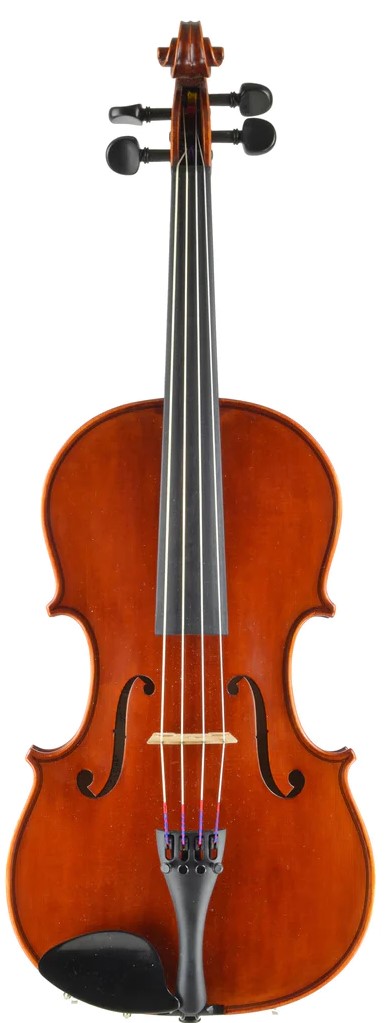 Then, as if we are back to the newspaper article again, the second refrain appears with the double-tracked vocalists and the parents explaining “we never thought of ourselves…we struggled hard all our lives to get by.” The string section adds to the arrangement in comparison to the first refrain but is still appropriately subdued to highlight the emotion of the parents’ dumb-founded expressions. Then, as if we are back to the newspaper article again, the second refrain appears with the double-tracked vocalists and the parents explaining “we never thought of ourselves…we struggled hard all our lives to get by.” The string section adds to the arrangement in comparison to the first refrain but is still appropriately subdued to highlight the emotion of the parents’ dumb-founded expressions.
One final verse is now brought forward in order to narrate briefly the whereabouts of this missing girl. Two days later, she keeps an appointment to meet “a man from the motor trade” to start their new life together, this being highlighted by full staccato pulses from the strings to leave the mystery of this man and the wonderment of their future hanging in the air as the final detail of the story.
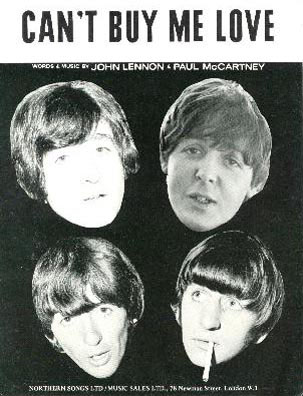 The final refrain, which does not chop off the twentieth measure this time around, makes the final lyrical point of the entire song. “She…is having…fun” Paul exclaims in the background as John relates the parents view that “fun is the one thing that money can’t buy.” (Well, apart from “love,” that is, as Paul related in “Can’t Buy Me Love” three years earlier. :-) ) The string arrangement pulls out all of the stops for this refrain, as if this older generation of musicians agreed that “fun” should supersede stability and conventionality (which they quite probably disagreed with but, of course, had no idea what the lyrics were when they were following the score put in front of them). As far as the young woman was concerned, however, fun was “always denied” to her in favor of the pursuit of monetary value, as Paul expresses as the final phrase of this third refrain. The final refrain, which does not chop off the twentieth measure this time around, makes the final lyrical point of the entire song. “She…is having…fun” Paul exclaims in the background as John relates the parents view that “fun is the one thing that money can’t buy.” (Well, apart from “love,” that is, as Paul related in “Can’t Buy Me Love” three years earlier. :-) ) The string arrangement pulls out all of the stops for this refrain, as if this older generation of musicians agreed that “fun” should supersede stability and conventionality (which they quite probably disagreed with but, of course, had no idea what the lyrics were when they were following the score put in front of them). As far as the young woman was concerned, however, fun was “always denied” to her in favor of the pursuit of monetary value, as Paul expresses as the final phrase of this third refrain.
 An eight-measure conclusion then follows which rounds out the musical arrangement with a strident push and elegant religious-like ending. A final double-tracked repeat of the song’s title is sung by Paul in a downward fashion followed by a final waving “bye bye” from the parents as the bittersweet song concludes. An eight-measure conclusion then follows which rounds out the musical arrangement with a strident push and elegant religious-like ending. A final double-tracked repeat of the song’s title is sung by Paul in a downward fashion followed by a final waving “bye bye” from the parents as the bittersweet song concludes.
Paul once again is the driving force for “She’s Leaving Home,” performing his vocals with hardly a flaw, although the slowed-down stereo mix, which changes the song's key from F major to E major in the process, makes him sound rather unnatural and even as if he has a stuffy nose at times. John may have gotten "pissed" at Paul’s instructions during the recording of his vocal part, but Lennon's delivery of the parents rationalizations give the song the added strength to the message that was meaning to be conveyed. Bravo on both counts. Very well done!
American Releases
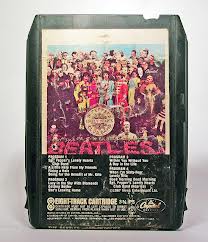 June 2nd, 1967 was the release date of the groundbreaking album “Sgt. Pepper’s Lonely Hearts Club Band.” While both mono and stereo copies of the album were available in the US, the vast majority of the country purchased the stereo version and thereby grew accustomed to hearing the somewhat slower mix of "She's Leaving Home" that is considered standard to this day. The mono version went out of print very quickly but became available again in the US in 2009 (see below). The stereo version continued to be reissued on vinyl throughout the years. June 2nd, 1967 was the release date of the groundbreaking album “Sgt. Pepper’s Lonely Hearts Club Band.” While both mono and stereo copies of the album were available in the US, the vast majority of the country purchased the stereo version and thereby grew accustomed to hearing the somewhat slower mix of "She's Leaving Home" that is considered standard to this day. The mono version went out of print very quickly but became available again in the US in 2009 (see below). The stereo version continued to be reissued on vinyl throughout the years.
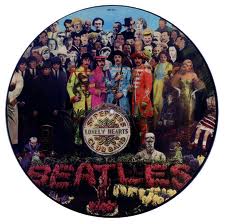 Sometime in 1978, Capitol released an interesting picture disc version of the LP which paired the famous front cover on the a-side with a close-up of the “Pepper” drum head on the b-side. Capitol re-released this picture disc on December 15th, 2017 on 180 Gram vinyl but now with the newer Giles Martin stereo mix. Sometime in 1978, Capitol released an interesting picture disc version of the LP which paired the famous front cover on the a-side with a close-up of the “Pepper” drum head on the b-side. Capitol re-released this picture disc on December 15th, 2017 on 180 Gram vinyl but now with the newer Giles Martin stereo mix.
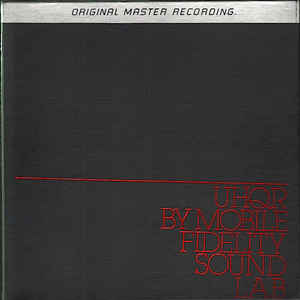 Two interesting American vinyl reissues of the album came out as "Original Master Recording" editions created by Mobile Fidelity Sound Lab. The first edition, released in September of 1982 (with matrix # UHQR for "Ultra High Quality Recording" 1-100), sold for $40 a copy, or five times the cost of the standard version. This new edition of the "Sgt Pepper" album was limited to 5000 sequentially numbered copies that weighed 200 grams (or double the weight of conventional vinyl at that time), each album packaged between layers of protective foam rubber in a thick box. The second edition from Mobile Fidelity Sound Lab was released in June of 1983 similar to the rest of the Beatles catalog released within their series. Both of these editions were created utilizing half-speed mastering technology from the original master tape on loan from EMI. These versions of the “Sgt. Pepper” album were only available for a short time and are quite hard to find today. Two interesting American vinyl reissues of the album came out as "Original Master Recording" editions created by Mobile Fidelity Sound Lab. The first edition, released in September of 1982 (with matrix # UHQR for "Ultra High Quality Recording" 1-100), sold for $40 a copy, or five times the cost of the standard version. This new edition of the "Sgt Pepper" album was limited to 5000 sequentially numbered copies that weighed 200 grams (or double the weight of conventional vinyl at that time), each album packaged between layers of protective foam rubber in a thick box. The second edition from Mobile Fidelity Sound Lab was released in June of 1983 similar to the rest of the Beatles catalog released within their series. Both of these editions were created utilizing half-speed mastering technology from the original master tape on loan from EMI. These versions of the “Sgt. Pepper” album were only available for a short time and are quite hard to find today.
The “Sgt. Pepper” album was first released on compact disc on September 21st, 1987. It was then re-released in a remastered condition on September 9th, 2009.
 Also released back on September 9th, 2009 was the long out-of-print mono version of the LP as contained in the amazing CD box set “The Beatles In Mono,” the vinyl edition being released on September 9th, 2014. Most Beatles’ fans got their first experience of listening to the original 1967 mono mix of “She’s Leaving Home” from this collection. Also released back on September 9th, 2009 was the long out-of-print mono version of the LP as contained in the amazing CD box set “The Beatles In Mono,” the vinyl edition being released on September 9th, 2014. Most Beatles’ fans got their first experience of listening to the original 1967 mono mix of “She’s Leaving Home” from this collection.
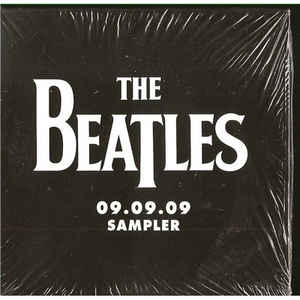 Also released on September 9th, 2009, in order to promote the entire remastered Beatles catalog, the "09.09.09 Sampler" was distributed to retailers and radio programmers, "She's Leaving Home" being featured therein. This has become difficult to find today. Also released on September 9th, 2009, in order to promote the entire remastered Beatles catalog, the "09.09.09 Sampler" was distributed to retailers and radio programmers, "She's Leaving Home" being featured therein. This has become difficult to find today.
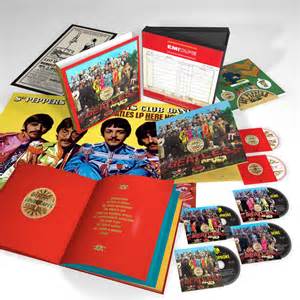 On May 26th, 2017, a newly remixed stereo version of "Sgt. Pepper" was released, this being created in order to simulate the superior mono mix of 1967. A vibrant new stereo mix of "She's Leaving Home" was included in all editions of this re-release. The instrumental "take one" was included in the "2 CD Anniversary Edition," while the instrumental "take one" and "take six" were included in the "Super Deluxe Edition" box set. On May 26th, 2017, a newly remixed stereo version of "Sgt. Pepper" was released, this being created in order to simulate the superior mono mix of 1967. A vibrant new stereo mix of "She's Leaving Home" was included in all editions of this re-release. The instrumental "take one" was included in the "2 CD Anniversary Edition," while the instrumental "take one" and "take six" were included in the "Super Deluxe Edition" box set.
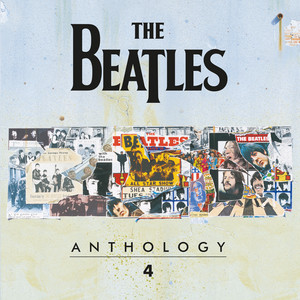 On November 21st, 2025, "Anthology 4" was released on both CD and vinyl, this album also being made available within the "Anthology Collection" box set on CD and on vinyl. "Take one" of the orchestral track for "She's Leaving Home" as recorded at EMI Studio Two on March 17th, 1967, as detailed above, was included on this release. On November 21st, 2025, "Anthology 4" was released on both CD and vinyl, this album also being made available within the "Anthology Collection" box set on CD and on vinyl. "Take one" of the orchestral track for "She's Leaving Home" as recorded at EMI Studio Two on March 17th, 1967, as detailed above, was included on this release.
Live Performances
 The Beatles may never have performed the song live, but Paul played it sparingly with his band on stage. His first use of the song was during his “Back In The US" tour of 2002, which began in Milwaukee, Wisconsin on September 21st at Bradley Center and ended on October 29th in Phoenix, Arizona. During the refrains of the song, Brian Ray, Rusty Anderson and Abe Laboriel Jr. sang Lennon’s counter melody lines while McCartney held out the falsetto high notes as he did on the original recording. The Beatles may never have performed the song live, but Paul played it sparingly with his band on stage. His first use of the song was during his “Back In The US" tour of 2002, which began in Milwaukee, Wisconsin on September 21st at Bradley Center and ended on October 29th in Phoenix, Arizona. During the refrains of the song, Brian Ray, Rusty Anderson and Abe Laboriel Jr. sang Lennon’s counter melody lines while McCartney held out the falsetto high notes as he did on the original recording.
Paul's brief “Driving Mexico” tour (from November 2nd to 5th, 2002) and his “Driving Japan” tour (from November 11th to 18th, 2002) also featured this song, as did his “Back In The World” tour the following year, this running from March 25th (Paris) to June 1st (Liverpool) of 2003.
Conclusion
 Of the three Beatles songs most usually thought of as orchestrated, “She’s Leaving Home” is generally considered as the least successful. While the song “Eleanor Rigby” won Paul an American Grammy Award for “Best Contemporary Vocal Performance, Male or Female” in 1967, and “Yesterday” secured the #1 spot on the US Billboard Hot 100 for four weeks and went on to become the most covered song in history according to the Guinness Book Of World Records (with over 2,200 recorded versions), “She’s Leaving Home” remained an album track and received little attention from the masses by comparison. Of the three Beatles songs most usually thought of as orchestrated, “She’s Leaving Home” is generally considered as the least successful. While the song “Eleanor Rigby” won Paul an American Grammy Award for “Best Contemporary Vocal Performance, Male or Female” in 1967, and “Yesterday” secured the #1 spot on the US Billboard Hot 100 for four weeks and went on to become the most covered song in history according to the Guinness Book Of World Records (with over 2,200 recorded versions), “She’s Leaving Home” remained an album track and received little attention from the masses by comparison.
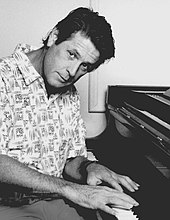 This is not to say that this extremely moving song, arguably the most moving song in the entire Beatles catalog, didn’t get noticed. Before "Sgt Pepper" was released, Paul flew to Los Angeles to premier some of these new songs to Brian Wilson of The Beach Boys, playing “She’s Leaving Home” on piano for Brian Wilson and his wife. He was quoted as saying,“We both just cried. It was beautiful.” This is not to say that this extremely moving song, arguably the most moving song in the entire Beatles catalog, didn’t get noticed. Before "Sgt Pepper" was released, Paul flew to Los Angeles to premier some of these new songs to Brian Wilson of The Beach Boys, playing “She’s Leaving Home” on piano for Brian Wilson and his wife. He was quoted as saying,“We both just cried. It was beautiful.”
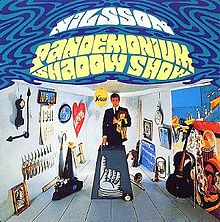 On June 12th, 1967, which was just ten days after “Sgt. Pepper” was released, Harry Nilsson was almost done with his first RCA LP “Pandemonium Shadow Show” when he found himself impelled to record his version of “She’s Leaving Home.” “With his savvy musical sense, he knew a gem when he heard one,” remembered Derek Taylor as documented in the CD liner notes to Nilsson’s album. On June 12th, 1967, which was just ten days after “Sgt. Pepper” was released, Harry Nilsson was almost done with his first RCA LP “Pandemonium Shadow Show” when he found himself impelled to record his version of “She’s Leaving Home.” “With his savvy musical sense, he knew a gem when he heard one,” remembered Derek Taylor as documented in the CD liner notes to Nilsson’s album.
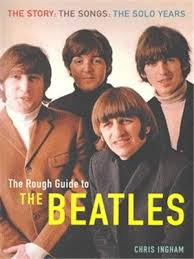 While this song may be habitually skipped over by listeners throughout the years, the overall complexity and versatility of the “Sgt. Pepper” experience cannot be enjoyed without appreciating its dramatic and poignant flair. Author Chris Ingham puts it perfectly in his book "The Rough Guide To The Beatles" when he describes the instrumentation as “one of the lushest Beatle orchestral sounds on one of the most mature Beatles songs.” While this song may be habitually skipped over by listeners throughout the years, the overall complexity and versatility of the “Sgt. Pepper” experience cannot be enjoyed without appreciating its dramatic and poignant flair. Author Chris Ingham puts it perfectly in his book "The Rough Guide To The Beatles" when he describes the instrumentation as “one of the lushest Beatle orchestral sounds on one of the most mature Beatles songs.”
Song Summary
“She’s Leaving Home”
Written by: John Lennon / Paul McCartney
-
Song Written: March, 1967
-
Song Recorded: March 17 & 20, 1967
-
First US Release Date: June 2, 1967
-
-
US Single Release: n/a
-
Highest Chart Position: n/a
-
-
Length: 3:26 (mono), 3:35 (stereo)
-
Key: F major (mono), E major (stereo)
-
Producer: George Martin
-
Engineers: Geoff Emerick, Richard Lush, Ken Scott
Instrumentation:
-
Paul McCartney - Lead Vocals
-
John Lennon - Lead Vocals
-
Erich Gruenberg - Leader, Violin
-
Derek Jacobs - Violin
-
Trevor Williams - Violin
-
Jose Luis Garcia - Violin
-
John Underwood - Viola
-
Stephen Shingles - Viola
-
Dennis Vigay - Cello
-
Alan Dalziel - Cello
-
Gordon Pearce - Double-bass
-
Sheila Bromberg - Harp
Written and compiled by Dave Rybaczewski
|
IF YOU WOULD LIKE TO MAKE A DONATION TO KEEP THIS WEBSITE UP AND RUNNING, PLEASE CLICK BELOW!
|